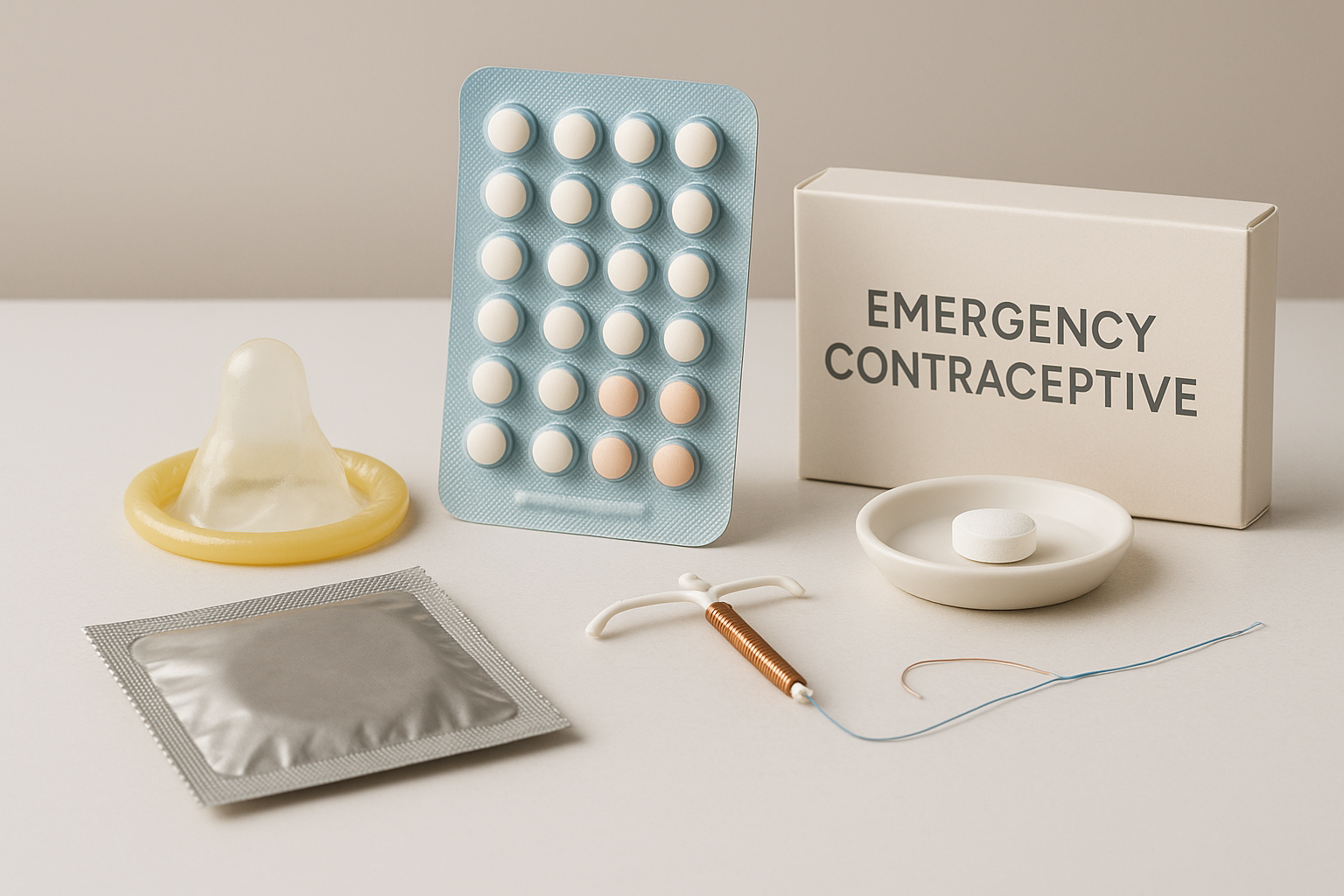Maintaining one’s sexual health is an indispensable part of health and wellness, and understanding contraception can help you make educated decisions. Learning about all the methods available to you, offers an opportunity to help you maintain intimacy and peace of mind.
🌟 Why Contraception Matters
The use of contraception comes with many benefits, from preventing STIs to unplanned pregnancies. It’s an important part of a sexually active couple’s relationship. It’s equally important for both partners.
🛡️ Common Popular Birth Control Methods
Condoms

Category: Barrier Methods
Offers Protection Against: Pregnancies + Sexually Transmitted Diseases
Advantages: Accessible for everyone, no medical consultation needed, protects against STIs
Disadvantages: Must be properly stored and utilized, can break, slip, be misplaced.
Birth Control Pills
Category: Hormonal contraception
Offers Protection Against: Ovulation
Advantages: Possible to manage and control menses, effective if taken as recommended.
Disadvantages: Non-Sti protection, opportunity to forgo treatment, and, possible health complications.
IUDs (intrauterine devices)
Categorized under: hormonal and copper-based.
Retention: Long term – (3 to 10 years)
Advantages: Does not be require active engagement. Very effective.
Disadvantages: Must be implemented by a doctor, initial discomfort likely.
Emergency Contraceptive Pills (morning after pills)
Usage: no protection during intercourse having a contraceptive break.
Timeframe: effect best within 72 hours.
Remarks: This shouldn’t be used as a primary approach but used only when needed.
Implants, and shots, patches
Offers protection through: Long lasting hormone infusing alternatives.
Advantages: Reduces chance of failure.
Disadvantages: Hormonal treatment side effects, needing to visit a health care provider.
Methods without medical interventions
Fertility awareness and withdrawal methods
Risk: if not executed perfectly, failure to secure protection to inter and inseminate can be very high.
Ideal for: Couples with great levels of appreciation and confidence to one another + regular cycle for menstruation
👫 Mixed Gender Groups:
It is all about personal preferences directed towards a health care professional. For single people without commitments, intercourse is likely to be with different people. For casual relationships:
These would be ideal for protection against STIs.
Single or casual partners? — Condoms are a must for STI prevention.
Stable long-term relationship? — Consider combining pills with other methods for better efficacy.
Planning children in a few years? — Reversible methods like IUDs or implants are ideal.
Hormone-sensitive? — Non-hormonal options like copper IUDs or condoms may suit you better.
🔁 Combine for Best Protection
Pregnancy and infections are best prevented with dual protection like condoms and IUDs or pills.
📚 Final Thoughts
Contraception is about prevention but also about managing your health and future. Work with a health professional for tailored advice, and for best results, discuss openly with your partner.
✍️ Caption
Explore safe sex options made simple — from condoms to contraceptive pills and beyond. Your ultimate birth control guide is here.
#ContraceptionExplained#SafeSexMatters#BirthControlGuide#SexualHealthAwareness#SexEducation#ContraceptiveOptions#CondomsVsPills#ModernBirthControl#ReproductiveHealth#HealthyRelationships#SexualWellness#FamilyPlanning#ContraceptionChoices#LoveResponsibly#SexualEmpowerment
⚠️ Disclaimer
This blog is intended for informational and educational purposes only. The views expressed are personal opinions or general insights, not professional or legal advice. Readers should do their own research or consult relevant professionals before taking action based on this content.







Leave a Reply